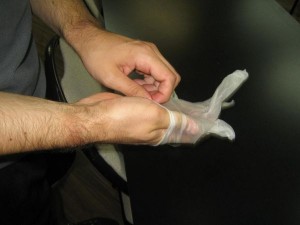Triage is the sorting of patients to properly determine the priority of their

health care needs and the proper site for treatment. In non disaster situations, health care workers assign a high priority to those who are the most critically ill by allocating more resources based on their needs.
Triage can be a difficult task if the emergency operations plan set by the health care facility is not well disseminated and resources are not properly distributed to those victims in greater need than the rest. For example, a young adult who has a chest injury and is at risk of an impending cardiac arrest, should be the priority in advance cardiopulmonary resuscitation, including medications, chest tubes, intravenous (IV) fluids, blood transfusion and possibly even an emergency surgery in the effort to save his/her life.
Fundamental principle in triage
Whenever health care providers are faced with numerous and overflowing numbers of victims of a catastrophic disaster, the fundamental principle in triage especially in the proper allocation of resources is to do the greatest good that would benefit the greatest number of people. Decisions are based on the likelihood or chances of survival and consumption of available resources. Therefore, when a patient and others with similar conditions associated with a morbid and near fatal injuries which would tax much of the limited resources of the facility will be given the lowest priority in a massive disaster situation, despite the victim being conscious. Although this might seem to be uncaring in an ethical viewpoint, the expenditures of limited resources for people with a low chance of survival and denial of those resources for people with better chances of survival still wouldn’t justify the act.
Primary field triage management
The triage officer rapidly assesses and evaluates those injured at the disaster scene. The victims are then immediately tagged and transported or given life-saving interventions when appropriate. One rescuer performs the initial triage while emergency medical services personnel perform life-saving intervention such as intubation while transporting the victim to a health care facility. Although emergency medical personnel could initially carry out triage at the scene of the disaster, secondary and continuous triage at all subsequent levels of care is vital.
Emergency department and subsequent triage
Staff and personnel of the emergency department should be in control of all entrances to the acute health care facility so that incoming patients are directed to the triage area first. The triage area may be outside the entry or just at the door of the emergency department. In this order, injured victims and patients including those arriving by medical transport along with able and walking patients to be properly sorted and given their priority level upon entering the facility. Some victims who were classified as high priority in the field may subsequently be reclassified in the hospital triage, depending on their current presentation. It is important to note that in emergency situations involving massive casualties/injured victims and the limited resources available, effective triage will be of great significance in the proper allocation of such resources that should benefit the greatest number of people.
